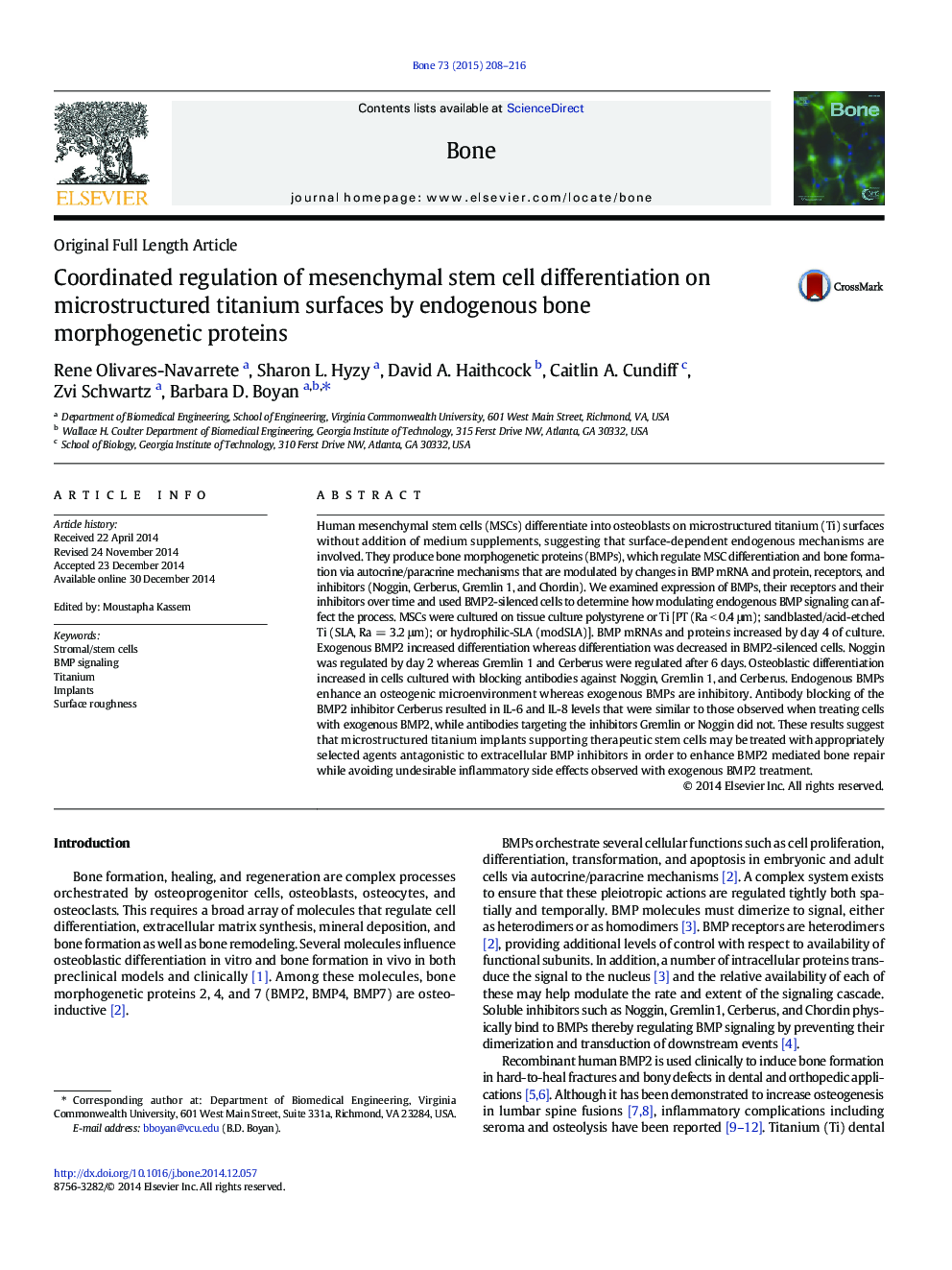| Article ID | Journal | Published Year | Pages | File Type |
|---|---|---|---|---|
| 5889969 | Bone | 2015 | 9 Pages |
Abstract
Human mesenchymal stem cells (MSCs) differentiate into osteoblasts on microstructured titanium (Ti) surfaces without addition of medium supplements, suggesting that surface-dependent endogenous mechanisms are involved. They produce bone morphogenetic proteins (BMPs), which regulate MSC differentiation and bone formation via autocrine/paracrine mechanisms that are modulated by changes in BMP mRNA and protein, receptors, and inhibitors (Noggin, Cerberus, Gremlin 1, and Chordin). We examined expression of BMPs, their receptors and their inhibitors over time and used BMP2-silenced cells to determine how modulating endogenous BMP signaling can affect the process. MSCs were cultured on tissue culture polystyrene or Ti [PT (Ra < 0.4 μm); sandblasted/acid-etched Ti (SLA, Ra = 3.2 μm); or hydrophilic-SLA (modSLA)]. BMP mRNAs and proteins increased by day 4 of culture. Exogenous BMP2 increased differentiation whereas differentiation was decreased in BMP2-silenced cells. Noggin was regulated by day 2 whereas Gremlin 1 and Cerberus were regulated after 6 days. Osteoblastic differentiation increased in cells cultured with blocking antibodies against Noggin, Gremlin 1, and Cerberus. Endogenous BMPs enhance an osteogenic microenvironment whereas exogenous BMPs are inhibitory. Antibody blocking of the BMP2 inhibitor Cerberus resulted in IL-6 and IL-8 levels that were similar to those observed when treating cells with exogenous BMP2, while antibodies targeting the inhibitors Gremlin or Noggin did not. These results suggest that microstructured titanium implants supporting therapeutic stem cells may be treated with appropriately selected agents antagonistic to extracellular BMP inhibitors in order to enhance BMP2 mediated bone repair while avoiding undesirable inflammatory side effects observed with exogenous BMP2 treatment.
Related Topics
Life Sciences
Biochemistry, Genetics and Molecular Biology
Developmental Biology
Authors
Rene Olivares-Navarrete, Sharon L. Hyzy, David A. Haithcock, Caitlin A. Cundiff, Zvi Schwartz, Barbara D. Boyan,
